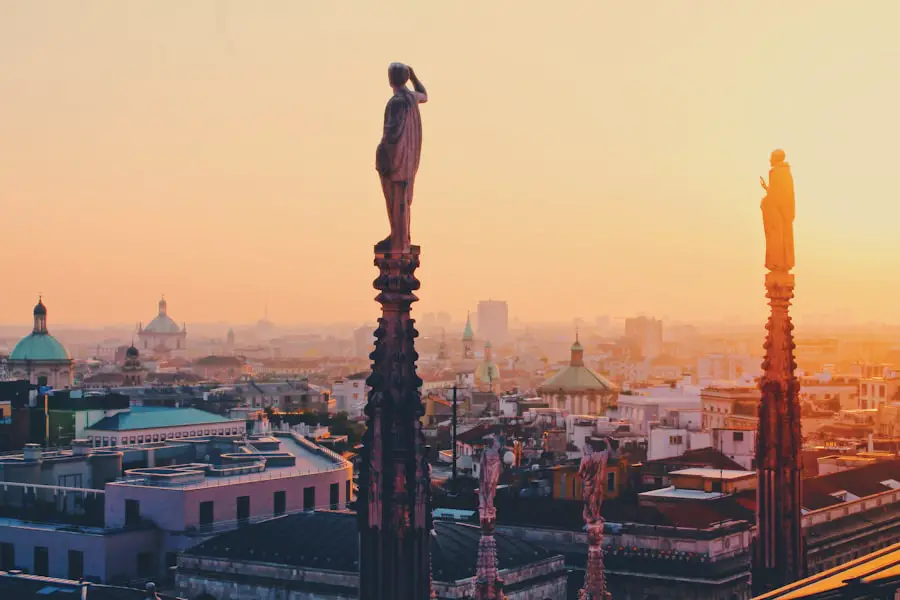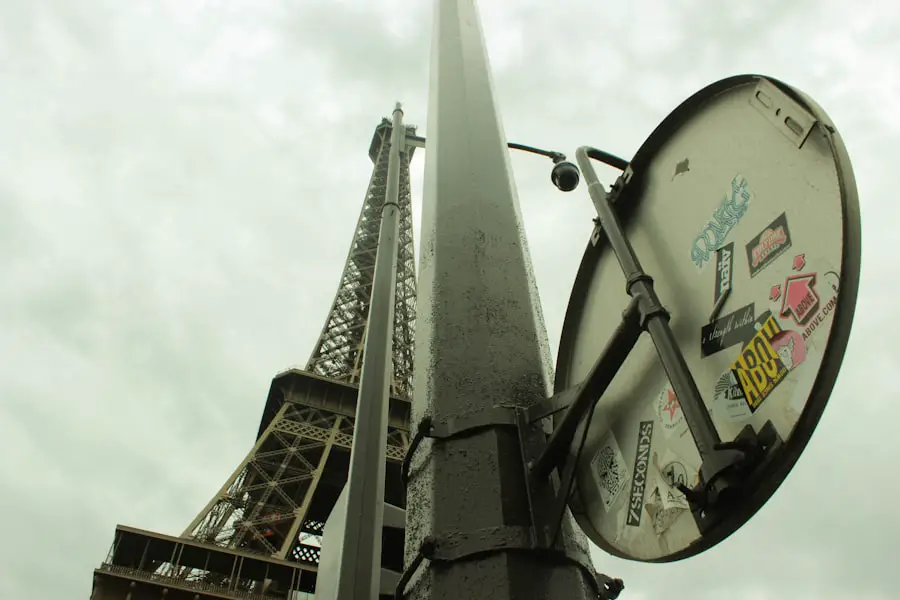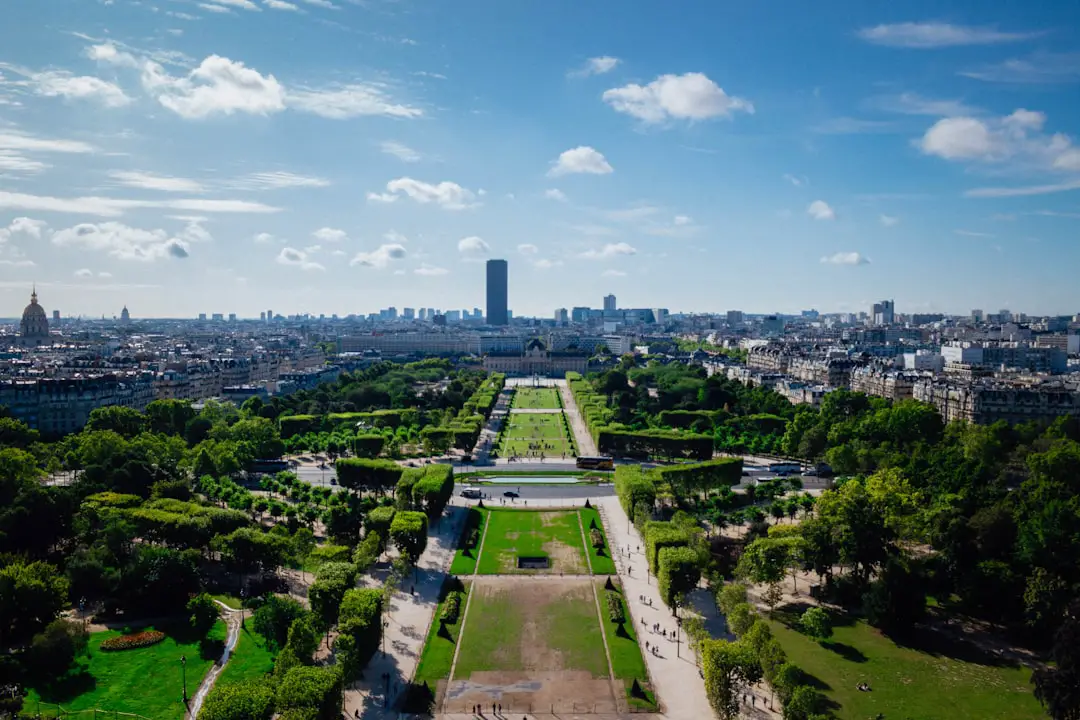Paris experiences a temperate oceanic climate, characterized by mild winters and warm summers. The city is known for its distinct four seasons, each offering a unique atmosphere and experience for visitors. Spring, which spans from March to May, is particularly enchanting as the city awakens from its winter slumber.
During this time, temperatures gradually rise, averaging between 10°C (50°F) and 20°C (68°F). The blooming of cherry blossoms and tulips in parks like the Jardin des Tuileries and Parc des Buttes-Chaumont creates a picturesque backdrop, making it an ideal time for leisurely strolls along the Seine or picnicking in the gardens. Summer, from June to August, brings warmer weather, with temperatures often reaching 25°C (77°F) or higher.
This season is marked by long daylight hours, allowing for extended exploration of the city’s iconic landmarks. However, summer also attracts a significant influx of tourists, leading to crowded attractions and bustling streets. The charm of Paris in summer is undeniable, with outdoor cafes brimming with patrons and street performers adding to the vibrant atmosphere.
Yet, visitors should be prepared for occasional heatwaves and sudden rain showers, which can disrupt plans. Autumn, from September to November, is another magical time in Paris. The weather cools down, with temperatures ranging from 10°C (50°F) to 18°C (64°F), and the foliage transforms into a stunning palette of reds and golds.
This season is perfect for exploring the city’s art galleries and museums, as many cultural events take place during this time. The crisp air and fewer crowds make it an excellent opportunity for those who prefer a more tranquil experience.
However, the holiday season brings a festive spirit to the city, with twinkling lights adorning the streets and Christmas markets offering seasonal treats.
Key Takeaways
- Paris experiences four distinct seasons, with mild springs, warm summers, cool autumns, and cold winters.
- The peak tourist seasons in Paris are during the summer months of June to August and the holiday season in December.
- Off-peak travel times in Paris are during the shoulder seasons of spring (April to May) and fall (September to October).
- Special events and festivals in Paris include Bastille Day on July 14th, Paris Fashion Week in September, and the Christmas markets in December.
- Budget-friendly travel times in Paris are during the winter months of January and February, as well as during the shoulder seasons.
Peak Tourist Seasons
Summer in Paris
From June to August, the city sees the highest number of visitors, as families take advantage of school vacations and travelers flock to the city for its renowned attractions. Iconic sites such as the Eiffel Tower, Louvre Museum, and Notre-Dame Cathedral become bustling hubs of activity during this time.
The city transforms into a winter wonderland, with festive decorations illuminating the streets and holiday markets offering artisanal goods and seasonal delicacies. Visitors are drawn to the enchanting atmosphere created by ice skating rinks at places like Hôtel de Ville and the famous Christmas tree at Galeries Lafayette.
Planning Ahead is Essential
However, this surge in tourism can lead to long lines at popular attractions and crowded public transportation. Travelers should be aware that peak seasons not only affect crowd levels but also accommodation prices. Hotels and vacation rentals often increase their rates during these busy periods, making it essential for visitors to plan ahead if they wish to secure reasonable lodging options. Booking well in advance can help mitigate costs and ensure a more enjoyable experience amidst the hustle and bustle of peak tourist times.
Off-Peak Travel Times

For those seeking a more serene experience in Paris, off-peak travel times present an excellent opportunity to explore the city without the throngs of tourists. The months of January through March are considered off-peak due to colder weather and fewer visitors. During this period, travelers can enjoy significant discounts on accommodations and attractions.
Museums are less crowded, allowing for a more intimate experience with art and history. For instance, the Musée d’Orsay or the Centre Pompidou can be explored at a leisurely pace, providing ample time to appreciate the masterpieces on display. Another off-peak period occurs in late autumn, specifically from mid-November until just before Christmas.
While some holiday festivities begin to emerge during this time, the overall tourist numbers remain lower compared to peak seasons. This window allows visitors to enjoy Paris’s cultural offerings without overwhelming crowds. Additionally, many restaurants offer seasonal menus that highlight local ingredients, providing an authentic taste of French cuisine that may be overlooked during busier times.
Traveling during off-peak times also allows for a more authentic experience of Parisian life. Visitors can engage with locals in cafes and shops without feeling rushed or crowded. This slower pace can lead to unexpected discoveries, such as hidden gems in lesser-known neighborhoods like Le Marais or Montmartre.
Exploring these areas without the pressure of large crowds can enhance one’s appreciation for the city’s rich history and vibrant culture.
Special Events and Festivals
Paris is renowned for its vibrant cultural scene, hosting a plethora of special events and festivals throughout the year that attract both locals and tourists alike. One of the most notable events is Bastille Day on July 14th, which commemorates the French Revolution. The day is marked by a grand military parade along the Champs-Élysées, followed by fireworks at the Eiffel Tower.
This celebration offers visitors a unique glimpse into French history and national pride while providing an electrifying atmosphere filled with music and festivities. Another significant event is Nuit Blanche, an all-night arts festival held in October that transforms Paris into an open-air museum. Artists from various disciplines showcase their work in unconventional spaces throughout the city, allowing visitors to experience art in a new light.
This event encourages exploration of neighborhoods that may not typically be on a tourist’s radar, fostering a deeper connection with the city’s artistic community. In addition to these larger events, Paris hosts numerous smaller festivals celebrating everything from food to fashion. The Fête de la Gastronomie in September highlights French culinary traditions with special menus at restaurants across the city.
Similarly, Paris Fashion Week attracts fashion enthusiasts from around the globe, showcasing cutting-edge designs from renowned designers. These events not only enhance the cultural fabric of Paris but also provide visitors with unique experiences that go beyond traditional sightseeing.
Budget-Friendly Travel Times
Traveling to Paris on a budget is entirely feasible with careful planning around travel times. As previously mentioned, off-peak seasons such as January through March offer significant savings on accommodations and attractions. Many hotels lower their rates during these months to attract visitors who are willing to brave the colder weather.
Additionally, airlines often offer discounted fares during off-peak periods, making it an ideal time for budget-conscious travelers to book flights. Moreover, visiting during weekdays rather than weekends can further reduce costs. Many attractions offer discounted admission prices on certain days or times, allowing travelers to stretch their budgets further.
For example, some museums have free entry on the first Sunday of each month or reduced rates during evening hours. Taking advantage of these opportunities can enhance the travel experience while keeping expenses manageable. Dining out in Paris can also be budget-friendly if travelers choose wisely about when and where to eat.
Lunch menus at bistros often provide excellent value compared to dinner prices, allowing visitors to enjoy authentic French cuisine without breaking the bank. Exploring local markets such as Marché Bastille or Marché des Enfants Rouges can yield delicious street food options at reasonable prices while providing an authentic taste of Parisian life.
Best Times for Sightseeing

Determining the best times for sightseeing in Paris involves considering both weather conditions and crowd levels. Spring (March to May) is often regarded as one of the most favorable seasons for sightseeing due to mild temperatures and blooming gardens that enhance outdoor experiences. Iconic landmarks such as the Eiffel Tower or Sacré-Cœur Basilica are particularly stunning against a backdrop of vibrant flowers and clear skies.
Autumn (September to November) also presents excellent conditions for sightseeing as temperatures remain comfortable while crowds begin to thin out after the summer rush. This season is ideal for exploring outdoor attractions like Parc des Buttes-Chaumont or taking leisurely walks along the Seine River while enjoying the changing foliage. Additionally, many cultural institutions host special exhibitions during this time, providing opportunities for enriching experiences beyond traditional sightseeing.
While summer offers long days perfect for exploration, it is essential to plan visits to popular attractions early in the morning or later in the evening to avoid peak crowds. Visiting lesser-known sites or neighborhoods during midday can provide a refreshing break from tourist hotspots while still allowing for meaningful exploration of Paris’s rich history and culture.
Tips for Navigating Crowds
Navigating crowds in Paris requires strategic planning and flexibility to ensure an enjoyable experience amidst bustling tourist areas. One effective strategy is to visit popular attractions during off-peak hours—early mornings or late afternoons—when crowds are typically thinner. For instance, arriving at the Louvre right when it opens allows visitors to appreciate masterpieces like the Mona Lisa without jostling for space among other tourists.
Another useful tip is to consider purchasing skip-the-line tickets or guided tours that offer priority access to major sites. Many attractions provide these options online, allowing travelers to bypass long queues and maximize their time spent exploring rather than waiting in line. Additionally, guided tours often include insightful commentary from knowledgeable guides that enrich the overall experience.
Exploring lesser-known neighborhoods can also provide respite from crowded tourist areas while still offering unique experiences. Areas like Canal Saint-Martin or Belleville boast charming cafes and local boutiques that allow visitors to immerse themselves in authentic Parisian culture away from the hustle and bustle of more popular destinations.
Choosing the Right Time to Visit
Selecting the right time to visit Paris ultimately depends on individual preferences regarding weather conditions, crowd levels, budget considerations, and desired experiences. For those who thrive in vibrant atmospheres filled with festivities and social interactions, peak tourist seasons may be ideal despite potential challenges posed by crowds and higher prices. Conversely, travelers seeking tranquility may find solace in off-peak periods when they can explore iconic landmarks at their own pace while enjoying significant savings on accommodations and attractions.
Special events throughout the year also present unique opportunities for immersive cultural experiences that can enhance any visit. Ultimately, understanding these various factors allows travelers to tailor their trips according to their interests while ensuring they make the most of their time in one of the world’s most captivating cities—Paris.
When planning the best time to travel to Paris, it’s important to consider various factors such as weather, crowds, and events happening in the city. For more information on how to make the most of your trip to Paris, check out this article on TakeTravelInfo. Additionally, if you’re looking for the best carry-on luggage for international travel or noise-canceling earbuds for your flight to Paris, be sure to read these articles on best carry-on luggage and noise-canceling earbuds.
FAQs
What is the best time to travel to Paris?
The best time to travel to Paris is during the spring (April to June) and fall (September to November) when the weather is mild and the city is less crowded.
What is the weather like in Paris during the best time to travel?
During the spring and fall, the weather in Paris is mild with temperatures ranging from 50°F to 70°F (10°C to 21°C). There is also less rainfall during these seasons.
When is the peak tourist season in Paris?
The peak tourist season in Paris is during the summer months of July and August when the city is crowded with tourists and the weather can be hot.
When is the off-peak tourist season in Paris?
The off-peak tourist season in Paris is during the winter months of December to February when the weather is cold and the city is less crowded.
Are there any major events or festivals in Paris during the best time to travel?
During the spring, Paris hosts the French Open tennis tournament and various music and cultural festivals. In the fall, there are fashion shows, art exhibitions, and the Montmartre Grape Harvest Festival.
